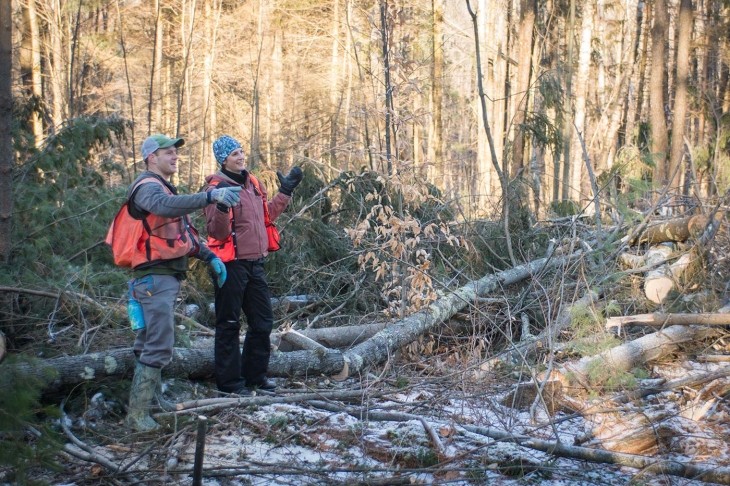
Today’s forests must respond to a changing world, with stressors ranging from fragmentation and pollution to invasive pests and a shifting climate. One of the best things we can do to help keep our forests healthy is to manage for diversity. But what is forest diversity? And, as forest stewards, how do we manage for it?
When most people talk about diversity, they mean species diversity: the number of different species (if you’re a forester, usually species of trees) present. Different tree species react differently to environmental changes, so having a diversity of tree species in your forest is like having “more tools in your toolkit,” more ways that the forest can adapt and respond as we move into an uncertain future.
In addition to species diversity, foresters also consider structural diversity: the arrangement of different ages and sizes of living and dead trees in a forest. If species diversity is which trees are growing in a forest, structural diversity is the way they are growing. A structurally diverse forest will contain patches of young trees, old trees, and middle-aged trees; different ages and sizes of trees growing together; and different shapes and sizes of dead wood.
When you combine structural and species diversity on multiple levels, you get a forest that is complex. Diverse and complex forests are resilient – able to remain healthy and productive amidst great stress and change. They are also adaptive – able to respond to the varied forms that disturbance and stressors take.
In forests that I manage, I use the cutting of both individual trees and groups of trees to build diversity and complexity while promoting the overall health of the trees in the forest. In selecting individual trees to harvest, I focus on freeing the healthiest trees from competition while simultaneously promoting a mix of many different tree species. When I see something weird, such as a red oak in a sea of sugar maple or a black cherry in the middle of a pine plantation, I celebrate it, thinning around it.
Harvesting groups of trees allows me to encourage both species and structural diversity in even more ways. Creating larger openings in the forest canopy encourages the regeneration of a wider variety of trees, including species such as yellow birch, white pine, and red oak that can’t compete in smaller openings. Managing forests is both a science and an art, and this type of harvesting can be quite artful: the groups you harvest can be different shapes and sizes, with different aspects and orientations. They can contain scattered seed trees, clusters of retained trees, snags, and cavity trees. You can harvest a group of unhealthy or mature trees, cut the trees overtopping a promising patch of young trees, or cut trees to expand the opening created by a natural blowdown. Most of the groups I harvest range from a few trees to a quarter-acre in size, but some are as large as a half-acre or even an acre.
As a forester, it’s easy to get fixated on trees and to forget that we are managing forests, which are complex communities of thousands of species of living things. The non-tree components of our forests – from moose and black bear to tiny invertebrates and fungi – which are also under stress, also play important roles keeping forests healthy and resilient, from dispersing seeds to cycling nutrients and building rich soils. By managing for diversity and complexity – including habitat elements such as old trees, snags, and dead wood – we provide habitat for a huge range of living things, improving the resilience and the health of the trees in our forests while simultaneously improving the resilience and the health of the forest community as a whole.
Each parcel of forestland is just a small piece of a much larger, interconnected landscape. As we encourage diversity and build resilience within an individual forest, fostering diversity between and across parcels is critical to making our landscapes more resilient. Managing for landscape-level diversity may be counterintuitive at times: There are forest types with less species diversity, such as hemlock forest, which are nonetheless critical for the survival of some wildlife species. There are habitat types, such as young or “early-successional” forest, which have less structural diversity but provide unique habitat for many wildlife and plant species. As forest stewards, promoting diversity both within our forests and across our landscape can help our forests be healthy and resilient in a broader sense.


Discussion *